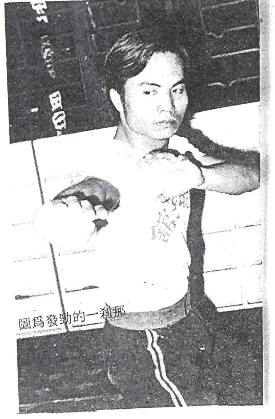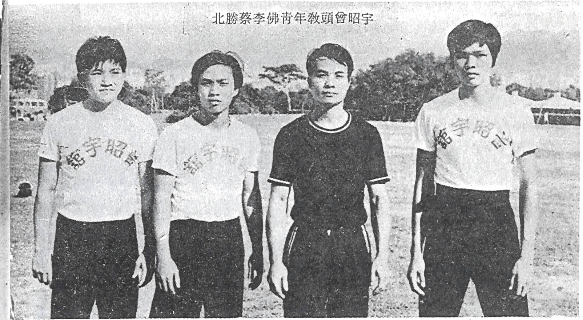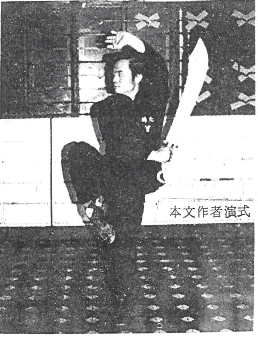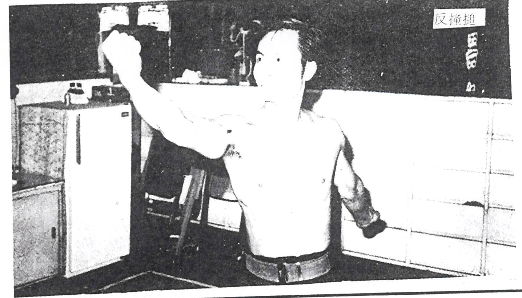Choy Lee Fut Buk Sing Concepts: Jam Joeng・Gong Jau・Heoi Sat・Tau Lau, Soeng Saang Soeng Hak Explained by Tsang Ciu Jyu
Chinese martial arts are profound and vast. Even a lifetime of study may not reveal the entirety of a single style. I, Tsang Ciu Jyu, humbly share my limited understanding from years of research, focusing on the concepts of Jam Joeng 陰陽 (Yin Yang), Gong Jau 剛柔 (Hard and Soft), Heoi Sat 虛實 (Empty and Solid), Tau Lau 偷漏 (Steal and Leak), Soeng Saang Soeng Hak 相生相尅 (Mutual Generation and Mutual Restraint), and the methods of power generation and chaining techniques:
Extreme Yang gives birth to Yin; Extreme Yin gives birth to Yang
Jam Joeng 陰陽: These are abstract terms—heaven is yang, earth is yin; fire is yang, water is yin, and so on. In Choy Lee Fut, movements like Gwaa 掛 are yang, Sau 掃 are yin; Paau 拋 is yang, Haap 扱 is yin. The tiger mouth of Caap Ceoi 插搥 facing up is yang, facing down is yin. For palm strikes, an upward palm is yang, a pressing palm is yin. When a yang strike is countered by pressing or cutting, it transforms into a tau lau (stealing/leaking) yin attack. If a Sau Ceoi 掃搥 (yin) misses, it is followed by a Gwaa Ceoi 掛搥 (yang) for a chained counterattack. This reflects the principle: “Extreme yang gives birth to yin; extreme yin gives birth to yang.” In movement, the opening and closing of yin and yang, combined with breathing, stretches the muscles and tendons, strengthens the organs, and achieves the highest aim of martial arts: health and vitality.

Extreme Hard Resembles Soft, Extreme Soft Resembles Hard
Gong Jau 剛柔: Buk Sing Choy Lee Fut descends from Southern Shaolin, a style that is both hard and soft. Its hard power differs from other southern styles, and its soft power is distinct from Tai Chi, Bagua, or Xingyi. For example, Gwaa 掛, Sau 掃, Paau 拋, Bin 鞭, and Zong 撞 appear extremely hard, but softness is present—like striking a snake with a rope: the hand holds one end, the other end whips the snake with great force. The movement is both hard and soft. For straight-line attacks like Caap Ceoi 插搥 or palm strikes, if met with a circular or horizontal defense, the practitioner adapts with tau lau, seeking openings rather than brute force—this is the “soft” principle. Sometimes, however, the waist, stance, and arm power combine for a breakthrough—this is hard power. “Extreme hard resembles soft, extreme soft resembles hard”—when to use hard or soft must be adapted, achieving the method of “combining hard and soft.”

Left Empty, Right Solid; Right Empty, Left Solid
Heoi Sat 虛實: There is “left empty, right solid,” “right empty, left solid,” “upper empty, lower solid”—one empty, one solid. If the first move is a feint and the opponent also feints, the defense is not opened. If the second move is a real attack, it may not succeed. Only after using feints to disturb the opponent, then striking with a real attack, can one secure victory. This is the “two empties, one solid” principle. There are also: “If empty, keep it empty; if solid, keep it solid; attacking appears empty, not attacking is solid; attacking appears solid, but is actually empty; empty and solid, transforming endlessly.” In combat, when the opportunity arises, use a real attack inside the opponent’s defense for a high chance of victory; otherwise, you may only waste energy.

The Longer the Exhale, the Shorter the Inhale
Tau Lau 偷漏: This must be used together with the above principles. “Tau lau” means not contesting strength directly—this aligns with softness. If a feint draws a real attack, tau lau exploits the opening. If I attack with Sau Ceoi 掃搥 (yin hand) and meet a strong defense, I “leak” with Paau Ceoi 拋搥 (yang hand) for a follow-up. All techniques—Gwaa 掛, Sau 掃, Caap 插, Paau 拋, Bin 鞭, Zong 撞—must combine yin, yang, hard, soft, empty, solid, and tau lau. Caap Ceoi 插搥 is especially skillful, combining “swallow, spit, mark, strike” and “wave, dodge, flash, shift” to achieve the body method of “the longer the exhale, the shorter the inhale.”
Types of Power Generation
- Long Power: Generated from a distance, used when the opponent’s defense is open or after they are already hit and unsteady.
- Short Power: Generated from the legs, waist, and shoulders, transmitted to the hand for short-range attacks like Caap Ceoi 插搥.
- Straight Power: Like a tiger pouncing, straight punches and palms.
- Horizontal Power: Horizontal breaks straight, the opposite of straight power.
- Returning Power: Power that goes out and comes back, such as when Caap Ceoi 插搥 meets a block and transforms into tau lau, using the returning force for another attack.
- Rotational Power: Like a bullet spinning in a rifled barrel, increasing force through rotation, e.g., switching between yin and yang techniques.

Chaining Techniques and Others
The above are commonly used methods. There are many other names and concepts, some of which are more esoteric and belong to Daoist or Buddhist philosophy, which are omitted here.
After tau lau, there is chaining (lin waan 連環), such as “left-right chaining,” “chaining Gwaa and Sau,” “chaining Paau and Zong,” etc. However, the “chaining Caap Ceoi” created by Grandmaster Tam Sam is unique.